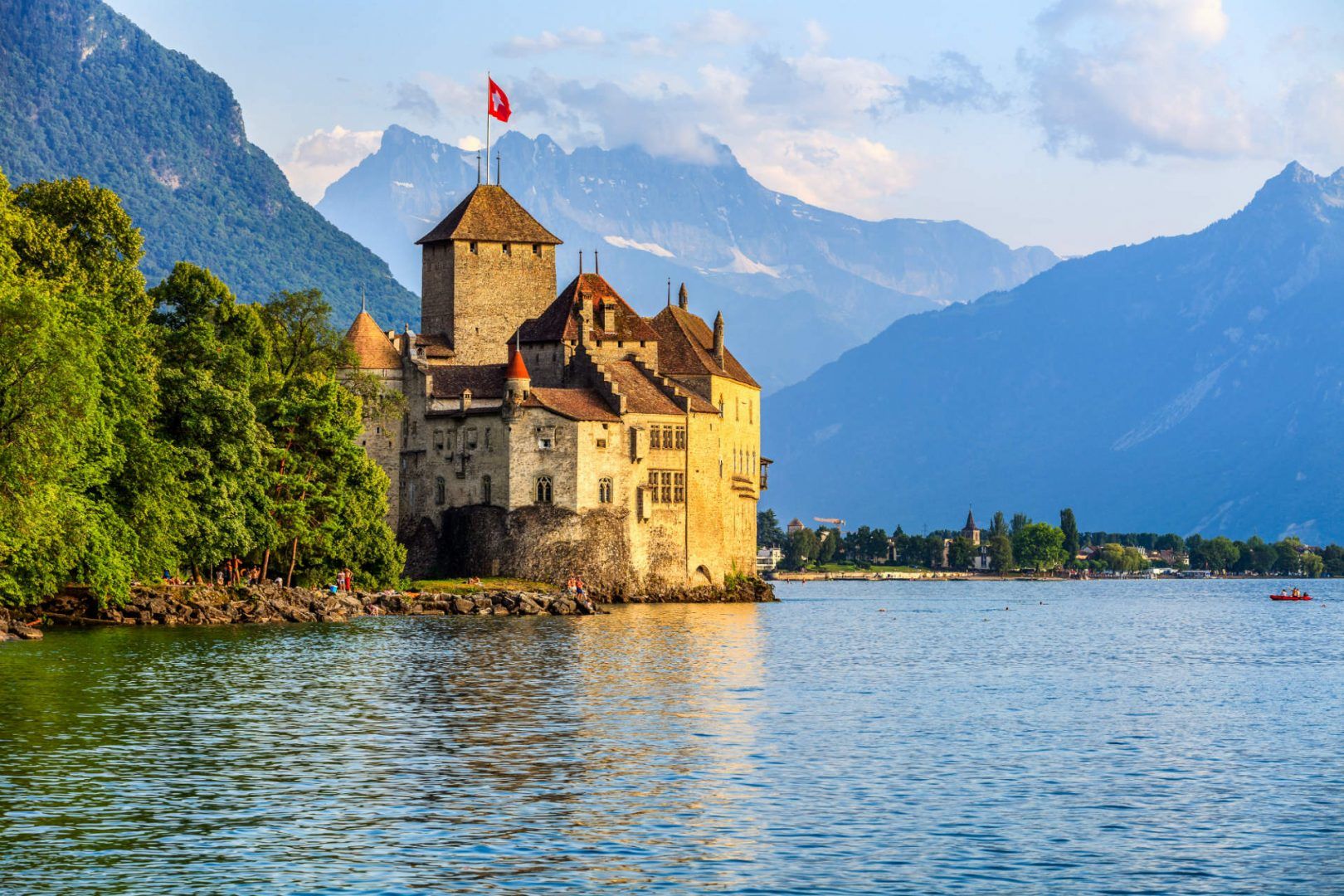La Côte
The gently curving northwestern shore of the lake from Geneva to Lausanne (some 65km) is known as La Côte. It’s characterized by a succession of hamlets and small villages, almost without exception pretty and well-kept.
Dozens of châteaux scatter the landscape, most of which remain in private hands. Those that aren’t include the historic Château de Coppet, close to Geneva, and the Château de Prangins near Nyon. The latter houses an excellent museum devoted to Swiss history.
Other major stop-offs include the attractive harbour-town of Nyon, which has its own château and Roman museum. A major town under the Romans, this has mellowed into an attractive little port.
The town is spread out among fields and lawns that reach down to the water, and is backed by acres of vineyards. There’s a château and an excellent Roman museum. The nearby Château de Prangins houses the regional branch of the National Museum.
Elsewhere, the quiet, wine-growing lakeshore town of Morges is a pretty, peaceful place to stop-off.
The waterside boasts a sturdy castle (the Château de Morges) that’s home to four military museums. Just beyond is the Parc de l’Indépendence, home to an annual tulip festival (mid-April to mid-May).
Where to stay in La Côte
- Best for town centre charm: Hostellerie du XVIe Siècle, Nyon. Occupying an arcaded building in the cobbled Old Town, the rooms are basic but clean, the staff are friendly, and the location is very convenient.
- Best for lakeside luxury: Le Rive, Nyon. This opulent four-star offers a choice of rooms in a quiet but central location by the lake.
- Best for couples: Romantik Hotel Mont-Blanc au Lac, Morges. An historic waterside hotel with elegantly furnished rooms, many of which have lake views.
Explore more of the best places to stay in Nyon and Morges.
Vevey and around
Whereas brassy Montreux has freely embraced all that glitters, its old-fashioned neighbour Vevey is more discriminating.
Vevey quietly cleans its streets, tends its flowerbeds, makes sure it has enough, but not too many, hotels. It then waits for visitors to find the town for themselves.
Generations of tourists return to Vevey to stroll the flowered promenades, muse on the Dent d’Oche, venture across the water on the belle-époque ships, and take high tea in grand hotels.
That said, there’s more to do than this suggests. Vevey’s shops, museums and local life mean you could easily use it as a comfortable base from which to explore the whole lake region.
















